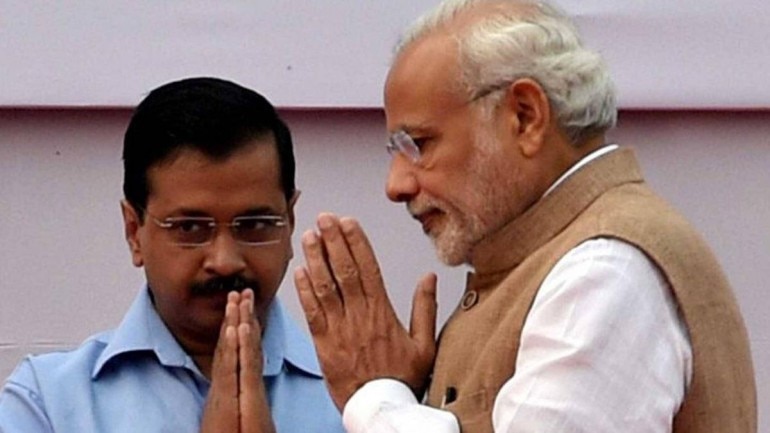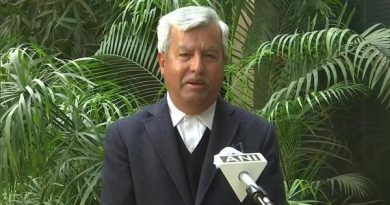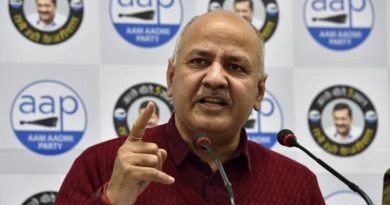“No negative campaigning” is Kejriwal’s strategy against Modi brigade?
Arvind Kejriwal is preparing to fight Modi without actually fighting Modi. This is a new strategy, which he must be desperately hoping to succeed in the Delhi Assembly election
etween 2013 Delhi Assembly election and 2019 Lok Sabha election, Aam Aadmi Party chief Arvind Kejriwal was the fiercest political opponent of Narendra Modi. Kejriwal’s fledgling party prevented the BJP from forming government in 2013 in Delhi.
In 2014, Kejriwal took on Narendra Modi, then prime ministerial aspirant, in the Lok Sabha election from Varanasi. In 2015 Delhi Assembly election, Prime Minister Narendra Modi and Arvind Kejriwal launched no-holds-barred attacks on one another as the BJP and the AAP engaged in bitter electoral fight. Kejriwal returned as Delhi chief minister with the AAP winning 67 of 70 seats pocketing 54 per cent vote share.
Cut to 2019, PM Modi was seeking second consecutive term in the South Block and hoping to beat anti-incumbency, the AAP was a major force in Delhi. But on the day of election results, Kejriwal’s party drew a naught in the national capital territory securing only 18 per cent vote share.
The worse was that Kejriwal’s AAP did not lose to the BJP but to the Congress in Delhi. In five of seven constituencies, the AAP finished third behind the Congress. In three of these constituencies, the AAP candidates forfeited their deposit. In contrast, the BJP had won all seven seats with 57 per cent vote share.
It was time for introspection for Kejriwal for his party had been virtually rejected by the voters for whom he was running a government for four years. He was to seek fresh mandate in less than a year’s time.
For four years, Kejriwal took on PM Modi, the person, in all his political squabbles with the Centre. He blamed PM Modi for tiff with the Lieutenant Governor of Delhi, raid on Delhi government officials and AAP members, sought proof of surgical strikes, questioned demonetisation and accused him of doing Hindutva politics of polarisation.
In the 2019 Lok Sabha defeat, Kejriwal saw his political problem more clearly. That, PM Modi remains a polarising factor in election and politics. And, a direct fight with him pits him against “nationalist” and “Hindu” voters.
Internal assessment of the party found that Muslims, Dalits and sizeable chunk of the middle-class voters had shifted allegiance to the Congress or the BJP in 2019 Lok Sabha election. He could not have risked antagonising “nationalist” and “Hindu” voters.
In consequence, a major shift was noticed in Kejriwal’s political positioning post-Lok Sabha results. Kejriwal, whom some commentators predicted in 2013 to occupy the place of Left politics, subtly positioned himself right of the centre. He claimed Hindu identity.
On June 4, less than two weeks from the Lok Sabha election results, Kejriwal posted a series of tweets posting photographs of him performing “Swaminarayan Bhagwan Ka Abhishek’ (literally, coronation of Lord Swaminarayan). The AAP also tweeted photographs of the same Hindu ritual performed by Kejriwal, who promptly retweeted them with his verified Twitter handle.
This was in sharp contrast to Kejriwal’s previous stance that religion is a personal matter. He had, in fact, once snubbed the Shahi Imam of Delhi’s Jama Masjid for asking Muslims to vote for the party.
Post-Lok Sabha election, suddenly government advertisements of the Mukhyamantri Teerth Yatra scheme became more visible in Delhi. Kejriwal was scheduled to travel with the first batch of Hindu pilgrims on July 20 but the death of Sheila Dikshit forced him to drop the idea.
Kejriwal was severely criticised and trolled by many on social media for not “raising his voice” over acquittal of all six accused in the Pehlu Khan lynching case of Rajasthan. In the face of criticism, his deputy Manish Sisodia expressed concern.
Asserting his Hindu identity appeared to be attempt to position himself not as a rival to PM Modi in the game of Hindutva rather as a proponent of idea that “Hindu Kejriwal for Delhi, Hindutva’s Modi for the Centre”. Posters with similar slogans were later seen on billboards in Delhi. Clearly, the political idea to challenge PM Modi had been dropped.
Next came a series of populist announcements. Free rides for women in DTC buses and Delhi Metro, no electricity bill for power consumption up to 200 units, 50 per cent subsidy on electricity bill for power consumption in excess of 200 units but up to 400 units, fast-tracking of CCTV installation – a promise ignored since winning 2015 Delhi polls, and also installation of free WiFi equipment at various places in the city.
In between, Kejriwal announced support to revoking of Article 370 in Jammu and Kashmir and responded with much more warmth than before to PM Modi’s birthday wish.
When Kejriwal was trolled for his support to the Modi government’s Article 370 move, AAP leader Sanjay Singh nuanced party’s position saying it is not with the Modi government over relegation of the status of Jammu and Kashmir from full-fledged state to Union Territory. Kejriwal, however, did not clarify his own statement of support.
Even in the case of protests against the Citizenship Amendment Act (CAA) in Delhi and elsewhere, Kejriwal has largely maintained silence. His party leaders, however, have been active at both Jamia Milia Islamia and Jawaharlal Nehru University expressing solidarity with protesting students.
On January 5, when JNU saw violence by masked men on the campus, it was Sanjay Singh who did most of the talking and also visited the university. When asked by reporters if Kejriwal would also visit JNU over the issue, he was evasive at best.
Kejriwal is preparing to fight Modi without actually fighting Modi. This is a new strategy, which he must be desperately hoping to succeed in the Delhi Assembly election for which votes will be cast on February 8. Results are expected on February 11.



